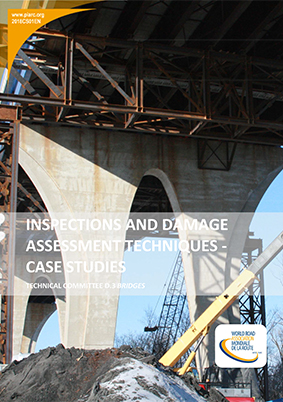Inspections and Damage Assessment Techniques - Case Studies

The PIARC TC D.3 Bridges Technical Committee is publishing a worldwide compilation of case studies as examples for bridge owners in making critical decisions to ensure the safety of the traveling public during a bridge incident caused by damage and deterioration. This case study compilation has 28 worldwide case studies received from 15 unique countries.
These case studies provide examples of incidents where owners discovered damage or deterioration under two main circumstances. Firstly, damage or deterioration resulting over longer periods of time, and secondly damage or deterioration appearing instantaneously. "Triggers" or causes of this damage or deterioration include environmental impacts, increased live loads, deicing applications, poor detailing in the design phase, poor construction materials and specifications, severe loading events, natural disasters, impacts, construction defects or by human error. At times, this discovery of damage and deterioration may lead to a bridge closure, traffic restriction, or weight restriction. This should result in damage assessment techniques, load carrying capacity calculations, and subsequent remedial works to return the bridge into service.
Information sheet
- Date: 2018
- Domain(s): Road Bridges
- Type: 2018CS01EN - Case studies
- PIARC Ref.: 2018CS01EN
- ISBN: 978-2-84060-492-1
- Number of pages: 218